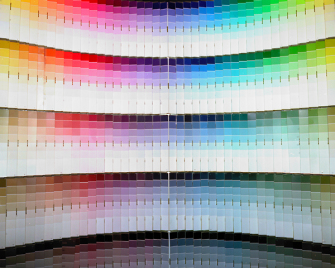Is Premium Paint Worth its Premium Price?
 Finding the best quality paint can be a challenge. While both price and reputation are often good indicators of quality within a product line, how do you compare paints from different manufacturers? What goes into making a quality paint?
Finding the best quality paint can be a challenge. While both price and reputation are often good indicators of quality within a product line, how do you compare paints from different manufacturers? What goes into making a quality paint?
Chemistry
All paint has three components: pigments, binders and thinners or solvents.
- Pigments provide the paint color, but they also determine how well a paint covers. Quality paints use better pigments (such as titanium dioxide) to improve coverage and last longer, along with other pigments to provide the color. Because of the expense of titanium dioxide, lesser quality paints use other pigments such as talc, calcium carbonate, silica or clay along with the color pigments. While these do provide hiding initially, they lack durability and wear quickly.
- Binders hold paint together on the wall and impact durability. The best quality latex paints use 100% acrylic binders since these are the longest lasting—but also the most expensive. Oil paints have modified oils called alkyds as binders.
- Thinners or solvents combine with the binders and pigments to determine the paint’s consistency and influence how easy or hard it is to apply. These help determine the texture, whether the paint’s watery or runny and how it stays in place.
Add It Up
When comparing paint quality within a single manufacturer’ paint line, price can matter—as it often means higher-quality ingredients. “Premium” lines may include a boost, too.
Feel the Difference
It’s called the touch test. First, choose the paints you’re comparing and have them shaken. Open each can and dip the tip of your thumb and forefinger into the paint. When you rub your fingers together, quality paint will have a smooth silky feel. A lesser-quality paint feels grittier. This is because the better, more expensive binders in the quality paint can be ground much finer than the less expensive binders used in the poor-quality paint. You can actually feel the difference with your fingers.
Benefits
A higher-quality paint isn’t just about a pretty color. Higher-quality paints are often thicker, enough to even skip the primer in some cases—which could at least balance out some of the cost. If you’re staying in your home for a long time, higher-quality paints will hold their color longer on the wall, so you’ll have a longer time between painting jobs.
-From Realtor.com
